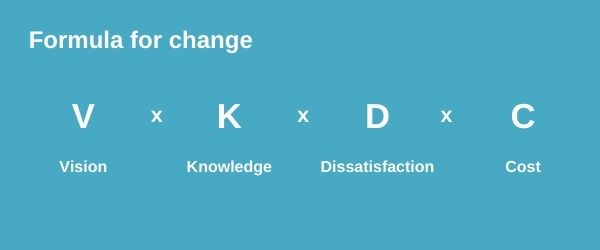We use cookies to make this site as useful as possible and maximize your experience. By closing this message, you consent to our cookies on this device in accordance with our cookie policy unless you have disabled them in your browser settings.
Conquering the Adaptability to Change in the Workplace: Pt. 2

In part one of our series on conquering change management and adaptability in the workplace, we looked at three key ways to help employees feel supported and valued during the COVID-19 pandemic. Our resident expert Dr. Tracy Brower is a Principal with the Applied Research + Consulting group at Steelcase, sociologist, and author who recently conducted a bkm OfficeWorks webinar titled “Adaptability, Change Management and Place.” In part two we will look at ongoing adjustments that must be made to standard change management methodology in the wake of coronavirus.
Adaptability in the Post-COVID Workplace with Change Management\
According to strategy-business.com, these are the 10 overarching principles of change management:
- Address the “human side” systematically
- Start at the top
- Involve every layer
- Make the formal case
- Create ownership
- Communicate the message
- Assess the cultural landscape
- Address culture explicitly
- Prepare for the unexpected
- Speak to the individual
Change Management Tools Through the Pandemic Lens
How should these 10 principles be adjusted, then, to meet the mental and emotional needs of workers due to the pandemic? “We want to start early and communicate plenty. I think the other thing we want to do is kind of celebrate where we’ve been, really link the past and the future. What are the things that were working for us in our physical environment? What are the things that were working for us and the ways that we connected before? And where will we take those next? Those will be really important for us,” says Brower.
After all, we are dealing with loss. Here are the 9 types of perceived loss Brower says we are facing:
- Control
- Face
- Security
- Competence
- Relationship
- Direction
- Autonomy
- Territory
- Future
These senses of loss would be relevant in a traditional change management scenario, and become even more relevant through the lens of the pandemic. Thus Brower recommends utilizing this formula for change:

She recommends it because it helps teams to work through those losses. Harness that vision of an ideal future and combine it with the knowledge you’ve gained. It’s also important to embrace your dissatisfaction at present; there needs to be a healthy dose of dissatisfaction for the formula to work. “And then all of those together need to be greater than the perceived costs of the change. And so this is never about sugarcoating. And it’s always about being clear about expectations. You want to bring people back to the office,” asserts Brower.
To learn more about change management and adaptability in the workplace, click here to watch the full webinar from Dr. Brower.
bkm consultants are ready to assess your current workplace and help you get ready to welcome employees back.
Contact us today at (858) 569-4700 or complete this form to receive a FREE post-COVID workplace consultation.
